This article was co-authored by Pippa Elliott, MRCVS. Dr. Elliott, BVMS, MRCVS is a veterinarian with over 30 years of experience in veterinary surgery and companion animal practice. She graduated from the University of Glasgow in 1987 with a degree in veterinary medicine and surgery. She has worked at the same animal clinic in her hometown for over 20 years.
There are 14 references cited in this article, which can be found at the bottom of the page.
This article has been viewed 26,960 times.
Lymphoma is a cancer of lymphocytes, which are white blood cells that are part of the immune system.[1] It is the most common type of cancer in cats. Lymphoma can spread to many parts of a cat's body, with the gastrointestinal tract being the most common location. Intestinal lymphoma requires veterinary treatment,[2] so it will be important for you to recognize the signs of this cancer and take your cat to your vet for a diagnosis.
Steps
Observing Symptoms at Home
-
1Write down when you first notice symptoms. Feline intestinal lymphoma progresses slowly, with symptoms gradually getting worse over one to three months.[3] Knowing how long the symptoms have been going on will help your vet accurately diagnose your cat.
- The symptoms of feline intestinal lymphoma are vague and occur with many other illnesses in cats.[4]
- Don’t worry if lymphoma doesn’t immediately come to mind when you notice the symptoms. Your vet will be able to make the diagnosis.
-
2Detect a decreased appetite. Interestingly, a large part of your cat’s immune system is in the digestive tract. When the lymphocytes in your cat’s digestive tract become cancerous, your cat will experience digestive upset. With intestinal lymphoma, your cat will lose its appetite.[5] Monitor your cat’s appetite by paying close attention to how much (or how little) your cat eats at meal time.
- In addition to eating less, your cat will start to lose weight. Decreased appetite and weight loss are two of the most common signs of feline intestinal lymphoma.[6]
Advertisement -
3
-
4Look for changes in your cat’s defecation. Observing your cat’s feces doesn’t sound very pleasant, but it can help with diagnosing intestinal lymphoma. Your cat’s defecation could change in different ways, including diarrhea or constipation. You may also see tinges of blood in the feces. Changes in defecation are less common than appetite loss, weight loss, and vomiting.[9]
- If your cat is constipated, you’ll see fewer feces in the litter box.
- Diarrhea occurs in about 30% of feline intestinal lymphoma cases.[10]
-
5Observe other symptoms of intestinal lymphoma. Sometimes, cats with feline intestinal lymphoma will start drinking and urinating more. They might also develop a swollen abdomen. Other cats with intestinal lymphoma might start eating inedible objects, like paper or cardboard.[11]
- Eating inedible objects is called pica.
Getting a Veterinary Diagnosis
-
1Have your vet perform a physical exam. Feline intestinal lymphoma requires a veterinary diagnosis. First, your vet will perform a physical exam, paying special attention to your cat’s abdomen. Your vet may feel enlarged abdominal lymph nodes. They may also feel thickened loops of intestine and/or masses within the intestinal walls.[12]
- The abdomen may feel completely normal, even if the lymphoma is advanced.[13] Your vet will need to perform other tests to diagnose intestinal lymphoma in your cat.
- Your vet will also listen to your cat’s heart and lungs.
- During the physical exam, give your vet a history of your cat’s symptoms. Explain when you noticed them, how long you’ve noticed them, and if they’ve gotten worse over time.
-
2Allow your vet to take blood samples. After the physical exam, your vet will recommend other diagnostic tests. Blood work can be useful for diagnosing feline intestinal lymphoma. For example, your vet will use a blood sample to test your cat for feline leukemia (FeLV) and feline immunodeficiency virus (FIV). Cats that are positive for either of these viruses are at risk for developing lymphoma.[14]
- Your vet will also analyze your cat’s blood work for anemia, which is the most common blood work abnormality in cats with intestinal lymphoma.[15] Anemia is a decrease in red blood cells.
- Your vet will also check your cat’s blood for levels of Vitamin B12 and folate. Blood levels of these two nutrients are commonly reduced in cats with intestinal lymphoma.
- Thyroid testing is also useful to rule out hyperthyroidism (overactive thyroid gland) as a cause for your cat’s symptoms.[16] Hyperthyroidism can cause vomiting, diarrhea, and weight loss.
-
3Agree to diagnostic imaging tests. Imaging techniques, such as ultrasounds and x-rays, are also useful in diagnosing feline intestinal lymphoma. Abdominal x-rays will help your vet identify intestinal problems, such as intestinal wall thickening and obstructions. Chest x-rays will show whether the lymphoma has spread to the lungs.[17]
- An abdominal ultrasound will show intestinal wall thickening and enlarged abdominal lymph nodes.
- Your vet can use ultrasound to take a sample of affected tissue to confirm the diagnosis. This is called an ultrasound-guided fine needle aspiration (FNA). An FNA is a collection of cells taken with a thin needle.
-
4Discuss options for taking a tissue sample. The most definitive way to diagnose feline intestinal lymphoma is with a sample of affected tissue. This sample can either be a biopsy (large piece of tissue) or ultrasound-guided FNA.[18] Your vet can take a biopsy using endoscopy or surgery. Each procedure, which require anesthesia, has its advantages and disadvantages:[19]
- Endoscopy is less invasive and faster than surgery, making it a good option for very sick cats. However, the endoscopy tube can reach only limited sections of the intestines. Also, the sample taken via endoscopy will not be as thick as that taken during surgery.
- Surgery allows for a thicker tissue sample that can be analyzed more thoroughly. However, surgery is invasive.
- Discuss the pros and cons of each procedure with your vet to decide which procedure would be best for your cat.
References
- ↑ https://lymphoma-action.org.uk/about-lymphoma/what-lymphoma
- ↑ https://www.vet.cornell.edu/departments-centers-and-institutes/cornell-feline-health-center/health-information/feline-health-topics/mammary-tumors
- ↑ https://s3.amazonaws.com/assets.prod.vetlearn.com/mmah/d0/a9fd5f3bbd4f3e8c468c04b0f8ffd4/filePV_27_10_741.pdf
- ↑ https://www.ethosvet.com/blog-post/feline-lymphoma/
- ↑ https://www.vet.cornell.edu/departments-centers-and-institutes/cornell-feline-health-center/health-information/feline-health-topics/lymphoma
- ↑ https://cvm.ncsu.edu/nc-state-vet-hospital/small-animal/oncology/feline-lymphoma/
- ↑ https://cvm.ncsu.edu/wp-content/uploads/2019/06/Feline-Lymphoma-Medical-Oncology-final.pdf
- ↑ https://s3.amazonaws.com/assets.prod.vetlearn.com/mmah/d0/a9fd5f3bbd4f3e8c468c04b0f8ffd4/filePV_27_10_741.pdf
- ↑ https://hampdenfph.com/wp-content/uploads/2018/04/oncology-handout.pdf
- ↑ https://s3.amazonaws.com/assets.prod.vetlearn.com/mmah/d0/a9fd5f3bbd4f3e8c468c04b0f8ffd4/filePV_27_10_741.pdf
- ↑ https://www.ethosvet.com/blog-post/feline-lymphoma-2/
- ↑ https://www.ethosvet.com/blog-post/feline-lymphoma/
- ↑ http://www.2ndchance.info/lymphomaCat.htm
- ↑ http://www.2ndchance.info/lymphomaCat.htm
- ↑ Beatty J and Barrs V. J Feline Med Surg. 2012;14(3):182‒190.
- ↑ Geiger T. Vet Clin Small Anim. 2011;41(2): 419–432.
- ↑ Geiger T. Vet Clin Small Anim. 2011;41(2): 419–432.
- ↑ http://www.ivghospitals.com/service/oncology/feline-lymphoma/
- ↑ Geiger T. Vet Clin Small Anim. 2011;41(2): 419–432.
- ↑ Beatty J and Barrs V. J Feline Med Surg. 2012;14(3):182‒190.
- ↑ http://veterinarymedicine.dvm360.com/just-ask-expert-how-do-you-treat-cats-with-intestinal-lymphoma
- ↑ https://s3.amazonaws.com/assets.prod.vetlearn.com/mmah/d0/a9fd5f3bbd4f3e8c468c04b0f8ffd4/filePV_27_10_741.pdf
- ↑ Geiger T. Vet Clin Small Anim. 2011;41(2): 419–432.
About This Article
To diagnose feline intestinal lymphoma, look for common symptoms, like loss of appetite, vomiting, changes in stool, increased drinking and urinating, or eating inedible objects. Write down when you first start noticing symptoms, and monitor your cat to see if they get worse since feline intestinal lymphoma progresses slowly over the course of 1-3 months. Keep in mind that these symptoms could indicate a variety of other health problems, so make sure you take your cat to a vet for a proper diagnosis. For more advice from our Veterinary co-author, like how to have your cat tested for lymphoma, read on.
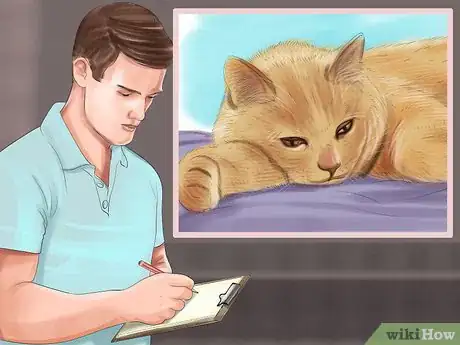
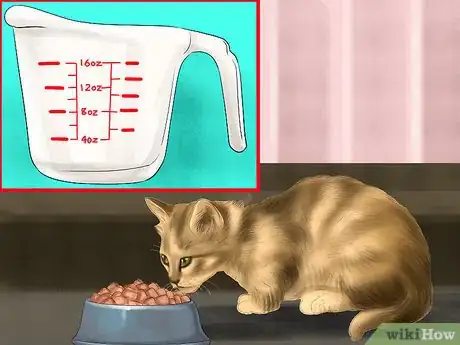

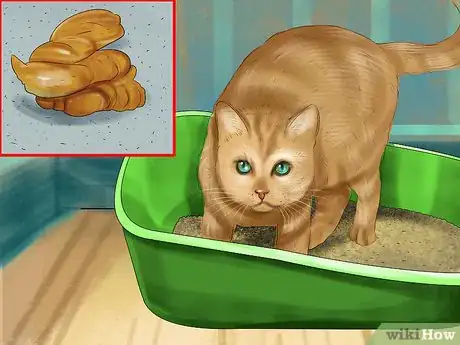

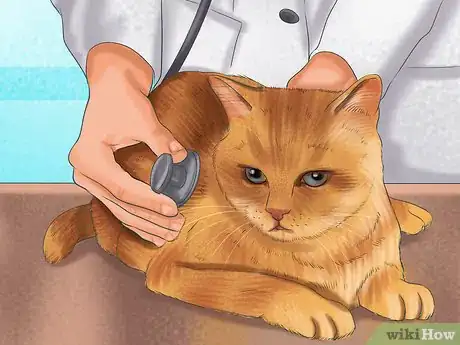
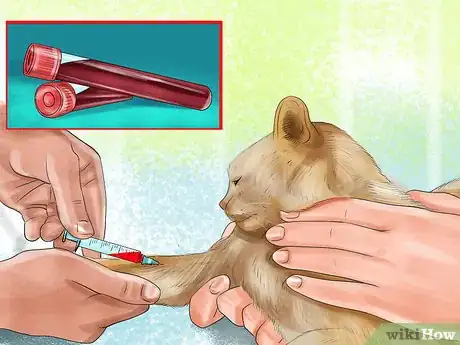
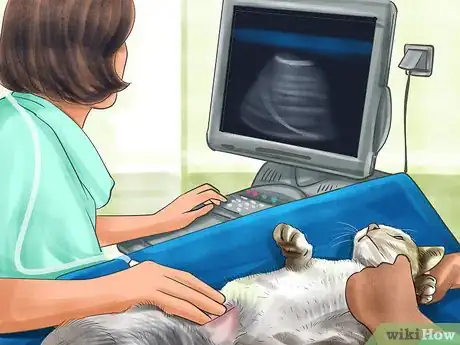
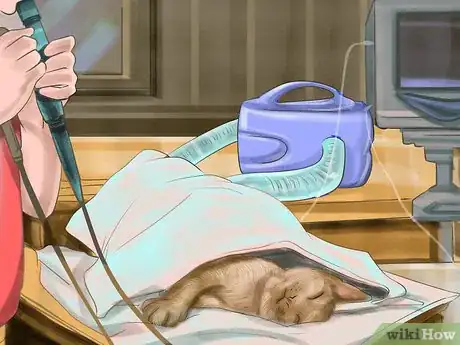




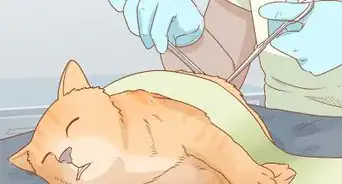
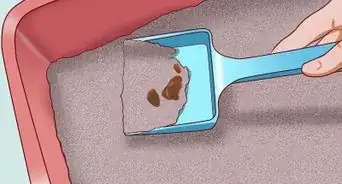




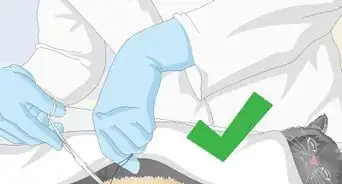
















































Medical Disclaimer
The content of this article is not intended to be a substitute for professional medical advice, examination, diagnosis, or treatment. You should always contact your doctor or other qualified healthcare professional before starting, changing, or stopping any kind of health treatment.
Read More...